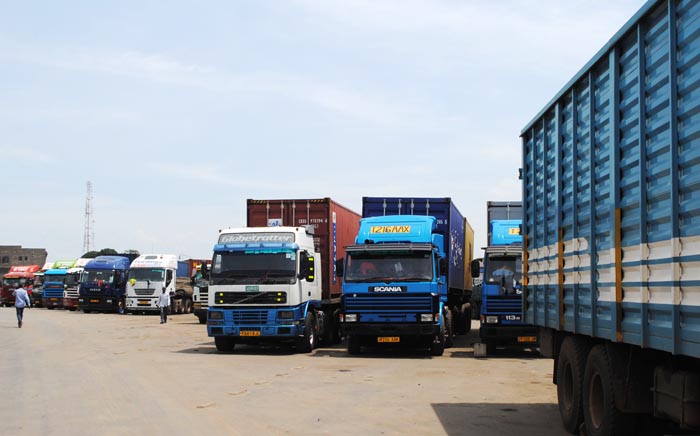Since the Bujumbura torrential rain of 9th February 2014, roads have been damaged. Today, trucks use the National Road N7 with many difficulties.-By Diane Uwimana
It is hard to believe. How on earth those trucks succeed to let one another pass on road N7! Arriving at Musaga Parking Station, there is a board indicating the way to use. “The tarmac road is damaged, every car must use this unpaved one,” says a policeman met at the place trying to regulate the heavy traffic. The used way is full of dangerous turnings. He indicates that if there is a truck which is about to pass, the other policeman at the top of the road calls him to stop other vehicles. The way is very small and uncomfortable, if the drivers do not pay attention, they may crash each other. However, even if policemen try to regulate the traffic, trucks ‘drivers complain about the long way they use and risk losing their lives. Gathered at their parking destination place commonly called “Gare Routière” this Monday 3 February 2014, drivers were furious. “We have lost two of our colleagues who were transporting petroleum because the road is very small especially from Bujumbura to Ijenda and it lacks road signs”, points out one of the trucks’ drivers from Tanzania, holding in his hand a book to collect money for the funeral of their colleagues. Those drivers point out that some of them have given up coming to Burundi because the transport has become very longer and more expensive. “Before the incident happens, we travel 250 km, but now, 150km is added. We must add petroleum or oil in order to drive without difficulties. Not only is the way too long, but also we spend much more time waiting for the clearing of the road,” underlines the driver. For them, Burundi Government should rehabilitate the former road (NR1-Bujumbura-Bugarama) very quickly in order to prevent any accident. “Our bosses think already to wait for the rehabilitation because the one we use is hardly feasible. If nothing is done, we are going to go to other countries”, he adds.
The Ministry in Charge of Transport, Infrastructures and Equipment assures
Ir. Pierre Bayihishako, Director of Roads Planning in the Ministry of Transport, Infrastructures and Equipments underlines that surveys are conducted in order to find out solutions. “We are aware of what happened and we are trying to rehabilitate those damaged roads in a rush for facilitating the traffic.” He states that the World Bank, European Bank and other partners have promised to give a hand. “Even if traders are free to choose where to run their business, they’d better wait for the rehabilitation,” points out Ir. Bayihishako.















 IWACU Open Data
IWACU Open Data

